Rana Ranjeet Singh and Rizvankhan S Ghasura share their experiences from organizing the National Hackathon on Smart and Remunerative Farming at the Navsari Agricultural University, Gujarat in this meeting note.
BACKGROUND
During 2017-2018, Navsari Agricultural University, Navsari, Gujarat (NAU), competed successfully and was selected for grant of NAHEP-CAAST project entitled ‘Establishment of Secondary Agriculture Unit for Skill Development in Students and Farmers’. The hackathon event under this project was organized by NAHEP-CAAST-NAU, Navsari, in collaboration with Indian Veterinary Research Institute, Izatnagar (IVRI), Uttar Pradesh; National Dairy Research Institute (NDRI), Karnal, Haryana; Centre for Social Entrepreneurship & Enterprises (CSEE), Institute of Rural Management, Anand (IRMA), Gujarat; Central Agro-forestry Research Institute (CAFRI), Jhansi, Uttar Pradesh; and Dr. Babasaheb Ambedkar Technological University, Lonere, Maharashtra.
This hackathon (Box 1) was intended to offer an opportunity to students, faculties and/or entrepreneurs/innovators to showcase their innovative approaches and technology solutions for promoting smart and remunerative farming practices in India. The present event acted as a catalyst to enhance learning capabilities, innovativeness, employability and entrepreneurial drive in agriculture and allied sectors.
|
Box 1: Hackathon |
THEMATIC AREAS
This event was intended to invite and encourage participants to come up with innovative and out of the box solutions for any problem in the main thematic areas of Livestock, Agriculture, Forestry and Food Quality. The participants presented efficient and sustainable solutions through technology and managerial intervention for emerging challenges at local and/or national levels.
Eligibility for Participation
 Any team, made up of four participants (not more than one faculty and/or one innovator/entrepreneur), was eligible to participate. The event had two stages. In the first stage, teams submitted explicit concept notes of maximum 500 words on any of the problems stated. After screening, teams were selected to present (offline) their solution (product/practices) for the problem stated before the expert committee, in the second stage. Time allocated for presentation and discussion was 15 minutes. Presentations were based on innovativeness, market need, scalability, technical and economic feasibility, budget requirement, stage of development, and potential impacts of the solution (product/practice).
Any team, made up of four participants (not more than one faculty and/or one innovator/entrepreneur), was eligible to participate. The event had two stages. In the first stage, teams submitted explicit concept notes of maximum 500 words on any of the problems stated. After screening, teams were selected to present (offline) their solution (product/practices) for the problem stated before the expert committee, in the second stage. Time allocated for presentation and discussion was 15 minutes. Presentations were based on innovativeness, market need, scalability, technical and economic feasibility, budget requirement, stage of development, and potential impacts of the solution (product/practice).
Evaluation system
A two-tier evaluation system was used to select innovative approaches. In the first phase, participants submitted their concept notes on the solutions to their problem statements. These submitted concept notes were referred to the expert committee for evaluation. Based on recommendations of this committee, the concepts notes were either selected or rejected. All selected participants were asked to present their ideas before the expert committee on 5 March, 2022, at NAU, Navsari. The expert committee comprised of renowned scientists/faculties from various IIMs, IITs, IRMA, national institutes and SAUs of agriculture, veterinary, forestry, and food quality from across India. The evaluation system was of the double-blind type. The entire event (from registration to automated declaration of result) was managed through our web portal, SARAL, and the entire process was paperless.
Awards
Winners from each theme were felicitated with certificates and cash prize as follows:
| Position | Cash prize (INR) |
| 1st | 25,000 |
| 2nd | 15,000 |
| 3rd | 10,000 |
INAUGURAL SESSION
The inaugural session was graced by the Hon’ble Vice Chancellor Dr. Z. P. Patel with Dr. Sanjay K. Dwivedi, Director of Personal (DoP), DRDO, New Delhi as the Chief Guest. Dr. T. R. Ahlawat, Director of Research and Dean PGS and PI, NAHEP-CAAST, NAU, Navsari, and Prof. Pratik Modi, Professor & Chairperson, PGDM-RM Programme, IRMA, Anand were Guests of Honour. The Vice Chancellor launched a web portal called SARAL, and a mobile application called ‘AI Xylorix’. In his address, he emphasized the adoption of smart farming technologies for making agriculture more sustainable and remunerative. He encouraged all participant students to think globally, but act locally. Dr Sanjay K. Dwivedi highlighted the problematic areas in agriculture and allied sectors that need to be resolved through appropriate technological interventions. Dr. T. R. Ahlwat, while sharing his views on the occasion, stated that the aim of the present hackathon was to sensitize PG students about the role of modern technology in improving profitability of farmers, and to encourage them to offer innovative solutions.
THEME 1: LIVESTOCK SECTOR
This session of the national hackathon, based on the theme of Livestock Sector, was conducted at the College of Veterinary Science & Animal Husbandry, Navsari.
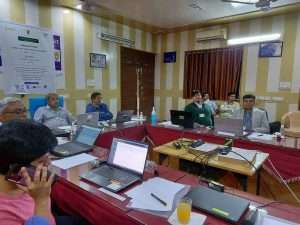
The Chairperson, Co-chairperson and Judges of the session were:
| Chairperson | Dr. Mahesh Chander, Joint Director (Extension), IVRI, Bareilly, UP |
| Co-chairperson | Dr. V. B. Kharadi, Principal, CVSc & AH, KU, NAU Center, Navsari |
| Judges | Dr. S. K. Singh, Principal Scientist, AR Division, IVRI, Izatnagar |
| Dr. Manjira Sinha, Assistant Professor (CEAI), IIT- Kharagpur, West Bengal | |
| Prof. Kushankur Dey, IIM-Lucknow, Uttar Pradesh | |
| Dr. Rana Ranjeet Singh, Associate Professor (LPM), Co-PI, Unit-3, NAHEP-CAAST-NAU, Navsari | |
| Dr. Anurag Pandey, Assistant Professor (LPT), PGIVER, Jaipur, Rajasthan |
During the session the different teams presented their concept notes as follows:
- Gajanan Kashinath Nagre from MAFSU, Maharashtra, identified the problem statement as ‘Innovative livestock business models’ and presented the solution with ‘PGGF mixed farming livestock business model for small landholders’.
- Abhinash from ICAR-NDRI, Haryana, titled the problem statement as ‘Wealth from livestock waste’ and the solution as ‘Development of isothermal bioreactor for generator of biogas’.
- Shreeja Swami from Kamdhenu University, Gujarat, came up with a solution – ‘Nimble diagnoser F2SVV – Low-cost, Portable, and Reliable diagnostic tool for heat detection and identification of parasites under field conditions’ against the problem ‘Nutrition, breeding, management and diagnostic interventions for livestock’.
- Karan Jain with his team from Kamdhenu University, Gujarat, recognized problem statement as ‘Artificial intelligent system/tool for optimum productivity, better health and welfare of animals’ and suggested the solution as ‘Pashu Mitra Chat bot’. (Second Position)
- Ritik Kulshrestha from NDVSU, Jabalpur, Madhya Pradesh, presented the problem statement ‘Farm data management and sharing in livestock farming’ and gave solution as ‘Mobile App: e-Pashu Prabandhan’.
- Dave Keshank from Kamdhenu University, Gujarat, addressed the problem of ‘Nutrition, breeding, management and diagnostic interventions for livestock’ by presenting the solution as ‘Rapid field diagnostic kit to provide services at farmer’s doorstep’.
- Pradeep Chandra from IVRI, Uttar Pradesh, presented the idea as ‘Design and development of cost effective, portable cervical modulation devices to relieve dystocia in ruminants’ against problem statement ‘Artificial intelligent system/tool for optimum productivity, better health and welfare of animals’. (First Position)
- Shivam Bhardwaj from ICAR-NDRI, Haryana, stated the problem statement as ‘Sensors for management and health of livestock’ and suggested the solution as ‘A blueprint for applying precision livestock farming (PLF) for high-thorough put phenotyping’.
- Rushik Baldaniya, Navsari Agricultural University, Navsari, Gujarat, chose problem statement of ‘Wealth from livestock waste’ and proposed the solution as ‘Manufacturing of organic base fertilizer for organic and natural farming system’.
- Romesh Rajoriya, NDVSU, Jabalpur, Madhya Pradesh, for the problem of ‘Wealth from livestock waste’ suggested solution ‘Preparation of biofertilizers, biogas, fuel, panchagavya and role in the integrated farming’.
- Meet Thumar from ICAR-NDRI, Haryana, presented solution as ‘Salivary fern pattern-based estrus detection using foldscope’ against problem statement of ‘Estrus detection in livestock (buffaloes)’.
- Patel Ashok, Kamdhenu University, Gujarat, gave a solution, ‘Pulse wave therapy with tribal traditional herbal medicine for treatment of bovine mastitis’ to solve the problem of ‘Heavy economic loss in dairy industry due to mastitis’.
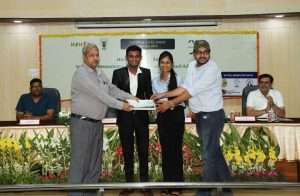 Awarding the team that got the First Position
Awarding the team that got the First Position
- Trivedi Tejaskumar, Kamdhenu University, Gujarat, offered a solution, ‘E–pashuposhan digital calculator’ for the problem of ‘Nutrition, breeding, management and diagnostic intervention for livestock’.
- Nutan Chauhan from ICAR-NDRI, Haryana, chose the question of ‘Nutrition, breeding, management and diagnostic interventions for livestock’ and gave a solution ‘Precision livestock farming: Towards more efficient and environment friendly animal production’.
- Agravat Priyam from Kamdhenu University, Gujarat, gave solution for a problem ‘Artificial intelligent system/tool for optimum productivity, better health and welfare of animals’, namely ‘Artificial intelligence in breed identification in cattle breeds of Gujarat’.
- Vansh Mishra, ICAR-NDRI, Haryana, addressed the problem ‘Value addition of milk and milk products’ and found a solution as follows: ‘Edible coatings of immunity boosting agents on paneer/cheese’.
- Likhitha from UHS, Bagalkot, Karnataka, dealt with the problem: ‘Innovative livestock business models’ and suggested a solution: ‘Urban farming’. (Third Position)
- Yuvana from UAS, Bengaluru, Karnataka, suggested a solution, ‘Symbiotic shrikhand blended with dates and honey’ for the problem, ‘Value addition of milk and milk products’.
- Nambi Ezhilarasu and team from Anna University, Tamil Nadu, presented their project ‘Fabrication of natural cosmetics using cattle waste’ to solve the problem of ‘Wealth from livestock waste’.
- Vinayaka Siddartha, SVVU, Andhra Pradesh, proposed a solution for the problem ‘Nutrition, breeding management and diagnostic interventions in livestock’ as ‘Development of a rapid milk testing device for sub clinical mastitis and adulterants at the field level’.
- Sudarshan Mahala from IVRI, Uttar Pradesh, again suggested a solution for problem – ‘Nutrition, breeding, management and diagnostic interventions for livestock’ as ‘Rapid detection of A1 and A2 milk producing cows’.
- Bilal Chamadia, ICAR-NDRI, Haryana, looked at ‘Sensors for management and health of livestock’ and found the following solution: ‘Rumisense: A sixth-sense tool for profitable livestock farming’.
All projects were thoroughly discussed, examined and interpreted by the members of the expert panel as well as Chairpersons, and evaluated through an online system that was compiled by the coordinator of the event, Dr. Rana Ranjeet Singh. The Chairpersons and judges closed with their general concluding remarks on all the presentations.

VALEDICTORY SESSION
Dr. Mahesh Chander, Joint Director (Extension), IVRI, graced the occasion as Chief Guest for the valedictory session of the national hackathon. In his address, he motivated students towards entrepreneurial activities during their college time. He stated that students are the key for change in rural India’s market.
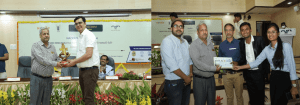
Dr. Rana Ranjeet Singh, Co-PI, NAHEP-CAAST said that 76 faculty and 182 students from different SAUS/ICAR institutes participated in the national level hackathon. Cash prizes of INR 2 lakhs, along with citations, were awarded to twelve winners in four thematic areas. At the end of the hackathon feedback on the effectiveness of the national level event was invited from all the participants, and they were encouraged to share their problems and suggestions for future events. The national level hackathon event concluded with a vote of thanks by Dr. Susheel Singh, Co-PI, NAHEP-CAAST, NAU, Navsari.
All those who are interested in organizing a hackathon could refer to the publication A Short Guide How to Organize a Successful International BioHackathon; Step by Step Protocol by iGEM 2018 Team, Vilnius Lithuania. https://static.igem.org/mediawiki/2018/2/2a/T–Vilnius-Lithuania–PDFguidebook.pdf
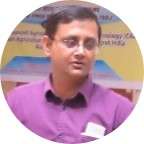 Dr. Rana Ranjeet Singh, Associate Professor (LPM), Co-PI, Unit-3, NAHEP-CAAST-NAU, Navsari, Gujarat, He can be reached at ranarsingh@kamdhenuuni.edu.in
Dr. Rana Ranjeet Singh, Associate Professor (LPM), Co-PI, Unit-3, NAHEP-CAAST-NAU, Navsari, Gujarat, He can be reached at ranarsingh@kamdhenuuni.edu.in
 Dr. Rizvankhan S. Ghasura, Assistant Professor (VAE), Department of Veterinary & A.H Extension Education, College of Veterinary Science & A.H., Navsari Campus, Kamdhenu University, Navsari, Gujarat, He can be reached at rghasura21@kamdhenuuni.edu.in
Dr. Rizvankhan S. Ghasura, Assistant Professor (VAE), Department of Veterinary & A.H Extension Education, College of Veterinary Science & A.H., Navsari Campus, Kamdhenu University, Navsari, Gujarat, He can be reached at rghasura21@kamdhenuuni.edu.in

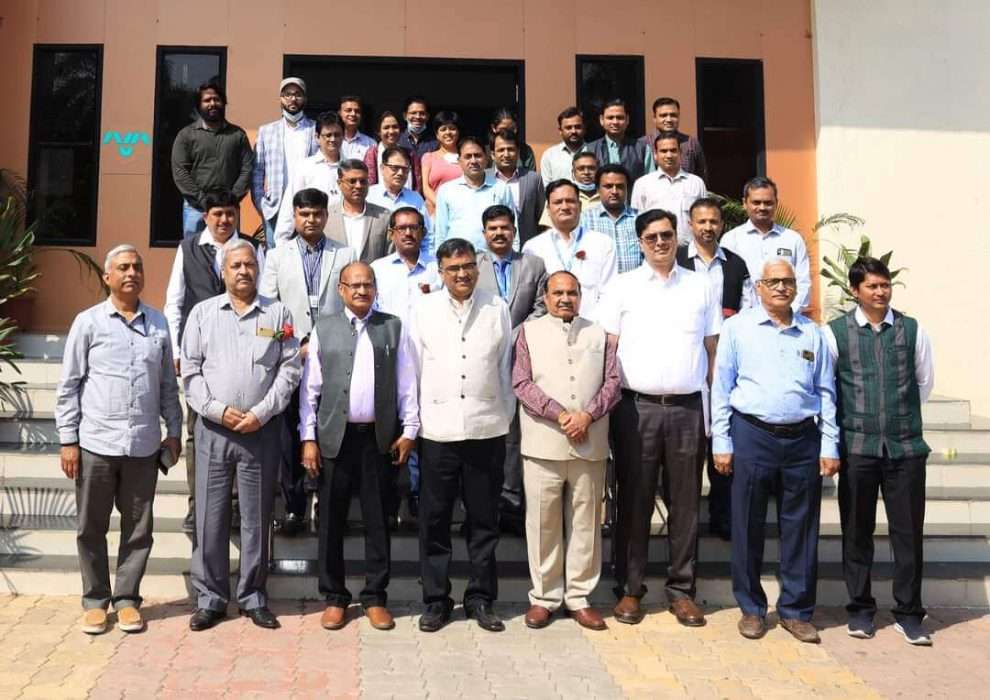

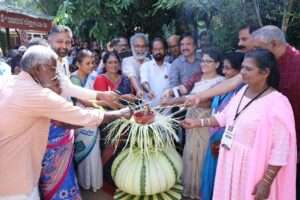

Add Comment